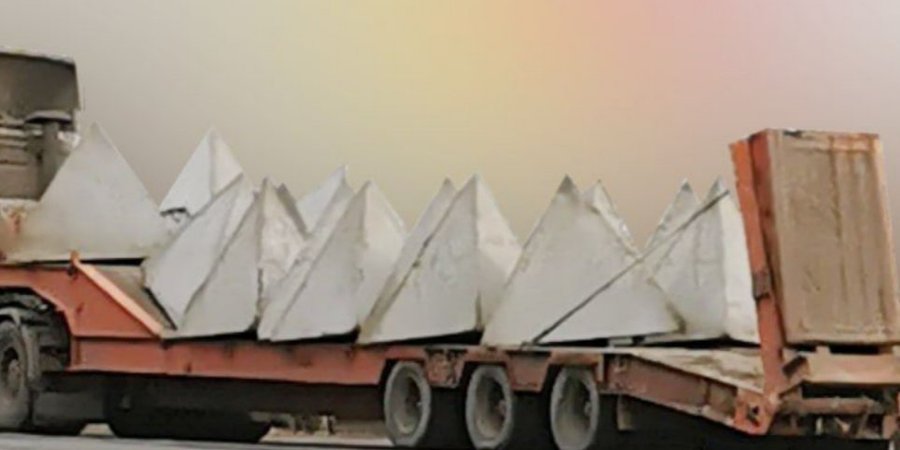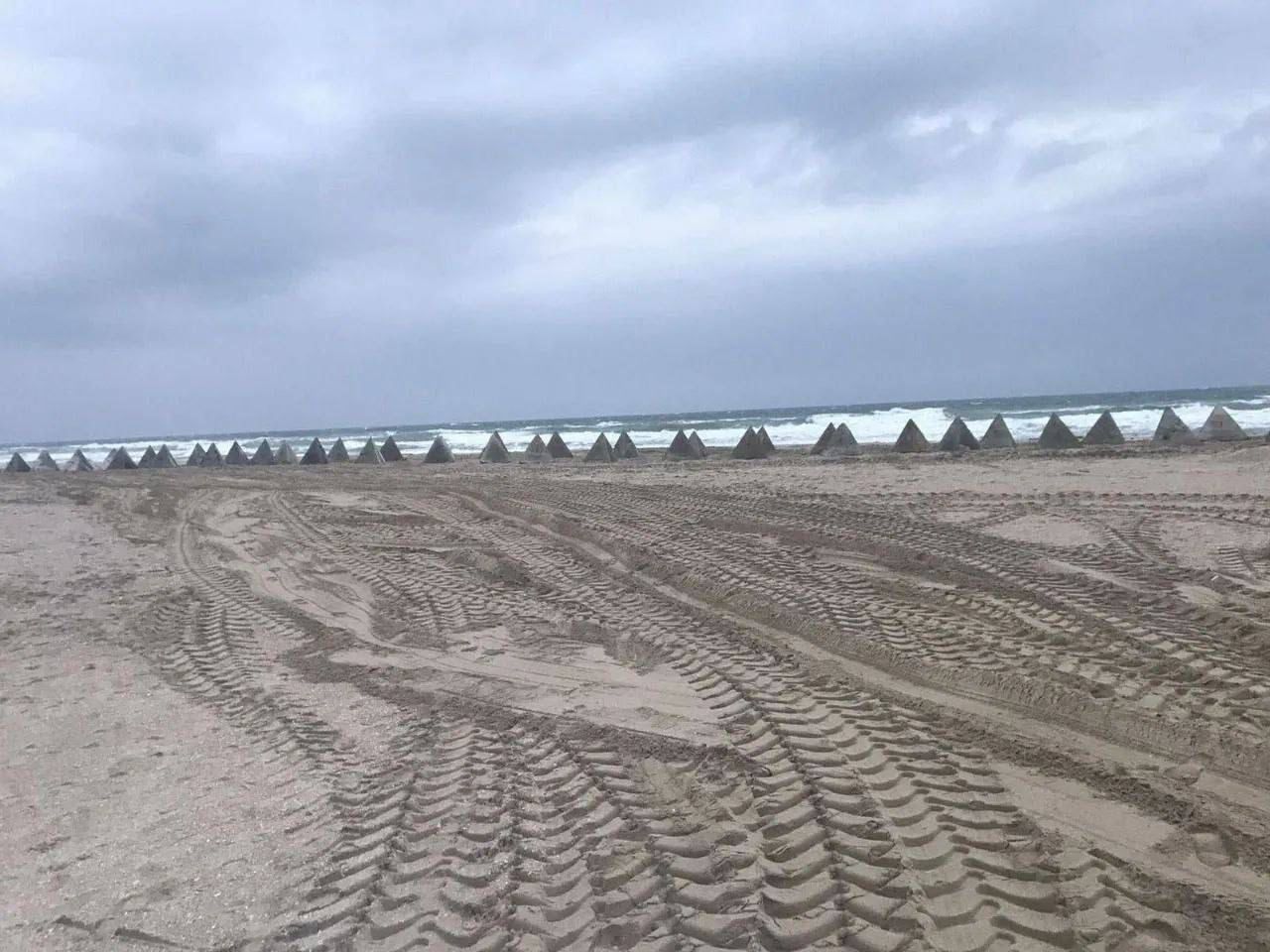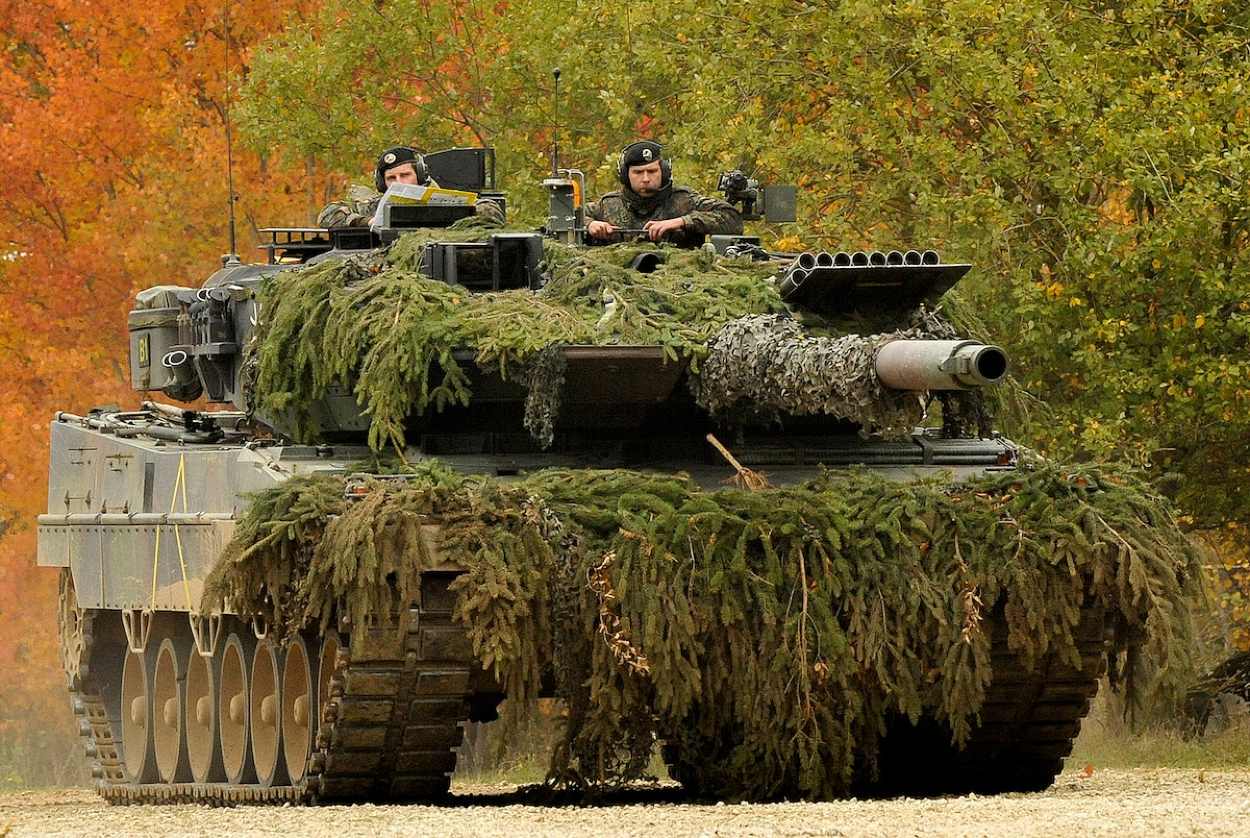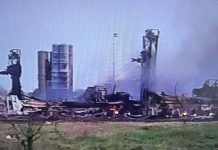Belarusian factories have recently been supplying the Russian military with the reinforced concrete “dragon teeth” structures that the troops use to erect a line of defense, a Belarusian Telegram channel reported on January 22.
According to the Belarusian Hajun monitoring group, the Gomel Iron and Steel Plant in Belarus is reportedly building and shipping “dragon teeth” tank traps to the Russian Federation. The Gomel plant began production more than a month ago.
The report claimed that this is not the only Belarusian company that manufactures anti-tank fortifications for the Russian military. However, the whereabouts of the other “dragon’s teeth” manufacturing facilities are unknown.
Locals have been observing the transportation of “dragon teeth”—pyramid-shaped concrete structures—over the past month, according to a report from another Belarusian Telegram channel, Flagshtok, on January 21.
The structures are carried via trucks, most typically of the KamAZ type, with Russian Federation and the Republic of Belarus license plates. On average, 10 to 15 dragon teeth are observed on a single truck.

The shipment of concrete structures could suggest establishing a defensive line in Gomel Oblast or Russia’s Bryansk Oblast.
These are the identical tank traps that the Wagner Group used to construct its infamous Wagner line in the occupied areas of Ukraine, as the monitoring group’s representative pointed out.
On November 8, 2022, UK intelligence reported that Russia had begun building defense fortifications around the seized Mariupol.
At the time, UK MoD claimed that two factories in the Russian-occupied Mariupol were producing many “dragon’s teeth” to stall moving military vehicles.

Obstacle barriers are commonly utilized with natural features to impede and block advancing enemy forces and reroute them to regions where they can be engaged. During the Second World War, such structures were deployed to block the movement of tanks and motorized infantry.
The deployment of such structures, according to experts, will be beneficial, but only if the barriers are placed carefully. They must also be guarded by artillery systems that are strategically placed and effective at monitoring their surroundings.
Russia-Belarus Military Cooperation
The revelation is not surprising given that Belarus and Russia have been in the spotlight recently for expanding defense cooperation amid the ongoing conflict in Ukraine.
It was recently reported that the Russian military might lay the groundwork for a potential attack on Ukraine from Belarus. In addition, many reports suggest that Russian President Vladimir Putin plans a coordinated campaign with his counterpart Belarusian Alexander Lukashenko in late 2023.
The Institute for the Study of War (ISW), a Washington-based think tank, recently predicted that a new offensive of northern Ukraine from Belarusian territory is becoming more probable by the end of the year for various reasons, including an increase in joint training exercises and rotations.
Additionally, groups of Russian troops and military hardware have been spotted close to the Belarus-Ukraine border. The EurAsian Times recently reported that Russia is sending troops and advanced military equipment to Belarus inside rail tankers.
On January 16, Russia and Belarus launched combined air force drills amid rising concerns that Putin would pressure his Belarusian counterpart to participate in the conflict.
Belarus announced that all its air force facilities, training grounds, and air defense units would be activated for the drills, with joint air patrols scheduled along the Belarusian border.

Minsk has maintained that the drills, scheduled to go until February 1, are entirely defensive and aim to improve interoperability in the joint performance of combat training missions.
Russian military personnel currently stationed in Belarus are completing training rotations and redeploying to combat in eastern Ukraine, according to the ISW, which added that Russia may have finished several recruitment cycles by the fall of 2023.
Recent intelligence reports from Ukraine determined that Russia and Belarus would likely hold their major drills in September of this year, Zapad 2023 and Union Shield 2023.
The think tank concluded that it is more possible that Russian forces are preparing the ground for a new, most dangerous course of action (MDCOA) that would involve striking Ukraine from Belarus in the latter half of 2023.
Nevertheless, a delayed schedule for this course of action could enable Russia’s military industry to prepare adequately to offer a bigger share of the necessary hardware for a fresh invasion from Belarus.
- Contact the author at ashishmichel(at)gmail.com
- Follow EurAsian Times on Google News





